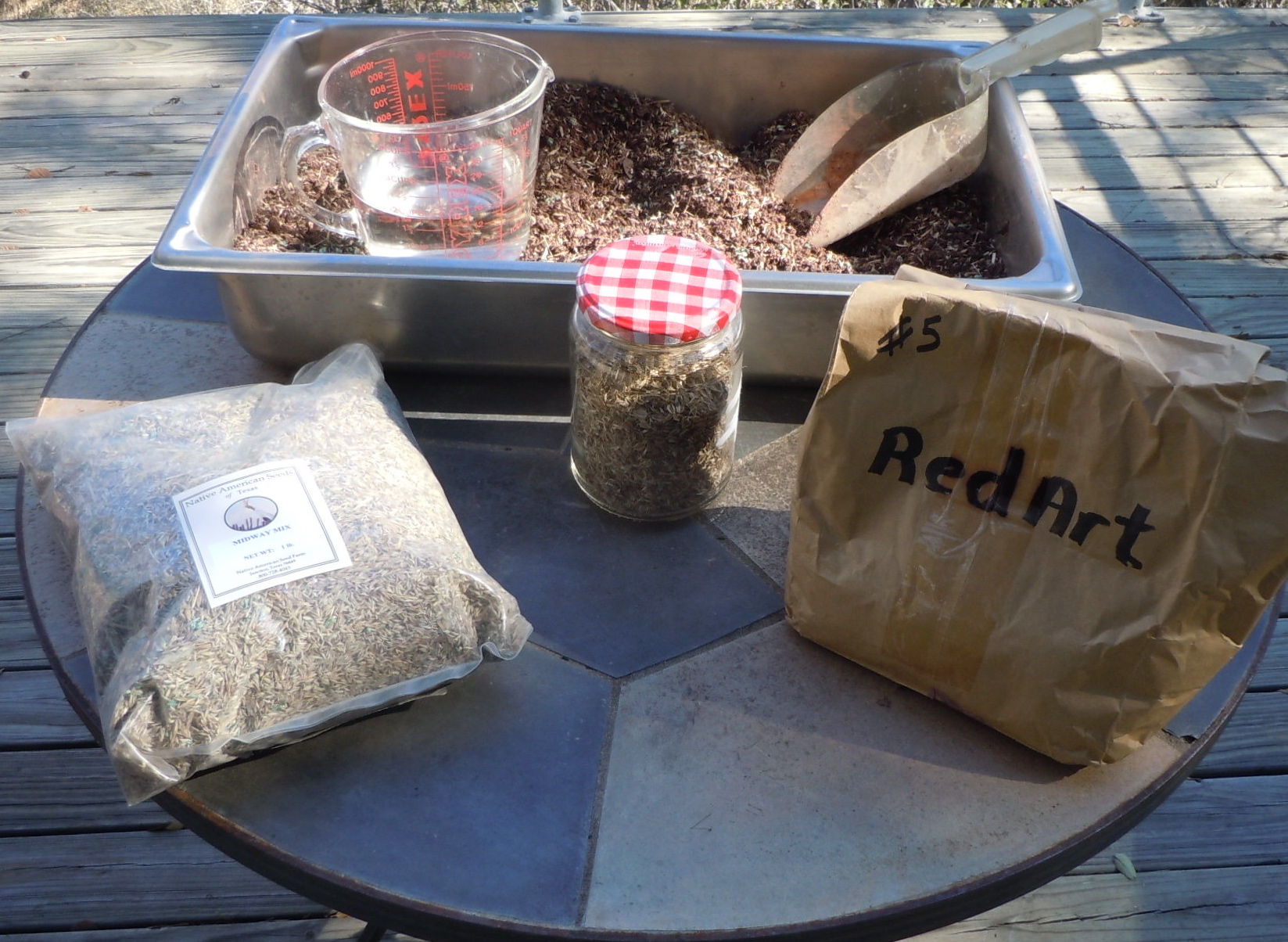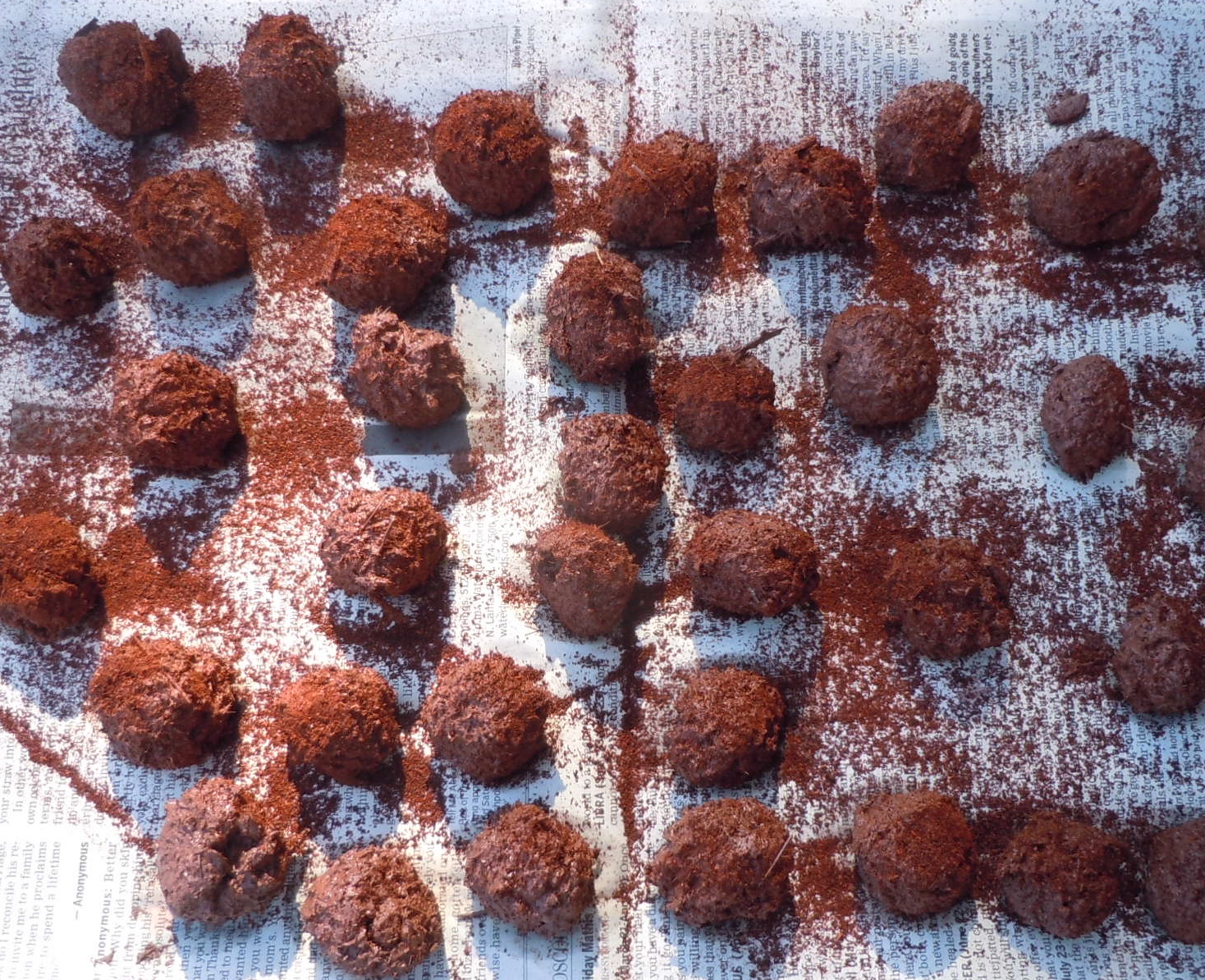The longest night of the year officially begins at 5:38 PM Central Standard Time tomorrow, Tuesday, December 21. As many of us sit down for dinner, the sun will climb directly over the Tropic of Capricorn, ending the shortest day and launching the longest night of 2010. It’s the Winter Solstice.
Spring will be marching toward us–something to celebrate. Some folks will bake Christmas cookies. Others will craft tamales. I’ll be mixing soil, clay, and water with seed–and a generous dash of chile pepper–to make seedballs.

What do you need to make seedballs? Seeds, soil, clay and water
What are seedballs?
Introduced in the 70s, seedballs are a form of “guerilla gardening” whereby seeds, soil and clay are mixed together into tidy germination bombs that are said to have an 80% higher germination rate than simply broadcasting seeds onto soil. Adding clay to the soil mix protects the seeds from being blown away by wind or consumed by insects or birds. Generally, seedballs don’t require watering (unless we’re in a historic drought) and you should NOT bury or plant them. Simply toss them in a vacant lot, your front yard, or a wildscape situation like a ranch or roadside. Wait for the rain to melt away the clay casing, and nature will do the rest.
Seedball recipes vary as much as those for Christmas cookies. Some seedball aficionados recommend a 3:2:1 ratio of soil, clay and seed, adding nutrient rich ingredients like worm casings or other natural fortifiers. The Lady Bird Johnson Wildflower Center encourages a concotion that includes sifting, humus with good bacteria intact, your local soil, and sand. I’ve had great success using three parts local or potting soil, 1-2- parts red potter’s

Let there be seedballs! Chile pepper discourages insects and birds.
clay powder (purchased from a pottery supply) and 1 part seeds. The clay creates a nice casing that keeps the balls intact. Add water until you get a workable dough that allows you to roll spoonful of seedball mix into a ball that doesn’t stick.
Put them on newspaper to set up and then add my secret ingredient: red chile pepper. The pepper discourages insects and birds from denigrating or eating the seeds, giving them a better chance at germination. If you find that your seedball dough is too watery, just wait. The soil soaks up the excess liquid with time.
Once the seedballs set up, usually after 24 hours, store them in paper bags for later use or toss them right away. Remember to use only native seeds for wildscaping situations. Good luck and let us know how it goes.
Butterflybeat Seedball Recipe
3 parts local soil or potting soil 1 – 2 parts red potter’s clay powder, also known as “terracotta powder” at pottery supply stores 1 part native wildflower seeds Water, as needed. Newspaper and cookie sheets for drying seedballs Stainless steal bowls or pots for mixing 1. Assemble ingredients. 2. Mix soil, clay and wildflower together in bowl. Mix well. 3. Add water to attain dough-like consistency, much like tart or pie dough 4. Pinch off or use spoon to grab gumball-sized amounts of the mix. Roll between your palms to get round form. Drop onto newspaper covered cookie sheet to dry. 5. Sprinkle generously with red chile pepper. Let set for 24 hours. 6. Toss and wait. Nature will do the rest.
Very interesting post! I have never heard of seedballs….similar to seed infused paper fiber. I wonder if you could put the clay into a mold–like a mini stepping stone?…
[…] This post on how to make seedballs, generates steady viewers and I suspect will spike as summer recedes and gardeners head back outside to plant wildflowers. Not a bad idea to get ready for fall and re-read Happy Solstice! Celebrate by Making Seedballs For Next Year’s Butterfly Garden. . […]
[…] This post on how to make seedballs generates steady views and I suspect will spike as summer recedes and gardeners head back outside to plant wildflowers. Not a bad idea to get ready for fall and re-read Happy Solstice! Celebrate by Making Seedballs For Next Year’s Butterfly Garden. . […]